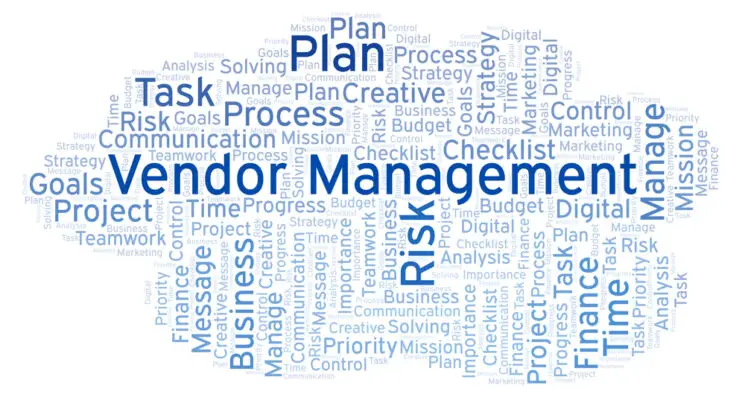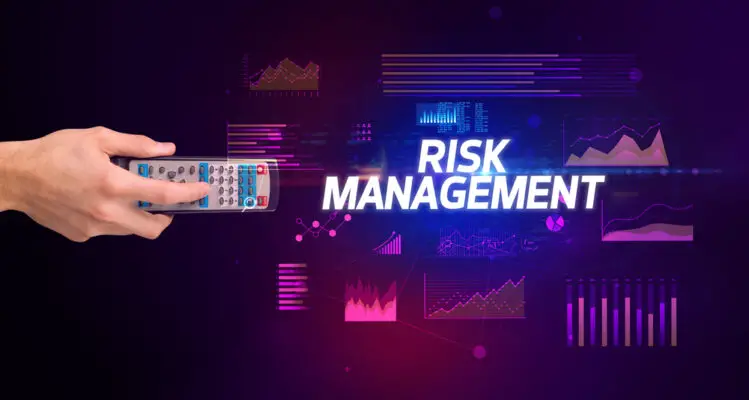The vendor risk management lifecycle is essential for businesses to manage their third-party vendors. It involves a series of steps that help identify, assess, and mitigate risks associated with the vendors. The lifecycle typically consists of three stages: onboarding, ongoing monitoring, and offboarding.
At the onboarding stage, companies should conduct due diligence to identify whether they need to employ a third party. This includes researching the vendor’s background and assessing their financial stability. Companies should also evaluate and select the right vendor based on their capabilities and risk profile.
Companies should regularly assess the vendor’s risk profile during the ongoing monitoring stage to ensure it meets their standards. Risk mitigation strategies such as contractual requirements or security controls can be implemented during this stage.
Companies should also keep track of any changes in the vendor’s operations or environment that could affect their performance or compliance with regulations.
At the offboarding stage, companies should document all activities related to terminating a relationship with a third-party vendor. This includes archiving records of contracts and other documents related to the relationship as well as ensuring that all data has been securely transferred back to them.
This blog post will overview the VRM lifecycle and discuss how this approach can help organizations ensure their vendors comply with all applicable laws and regulations.
Vendor Identification & Assessment
The first step in the vendor risk management lifecycle is identifying and assessing potential vendors. This includes researching their background, evaluating their financial stability, and understanding the scope of services they provide.
This process also involves verifying their compliance with applicable laws and regulations related to their industry and the entire third-party lifecycle.
Additionally, it’s important to determine whether there are any conflicts of interest between the vendor and your organization that could potentially lead to a breach of contract or other legal issues down the road.
Vendor Monitoring & Review
Once a vendor has been identified and assessed, it’s important to establish an ongoing monitoring program to keep track of changes in the vendor’s performance and compliance status. risk-based due diligence relies more on key risk indicators and third-party relationship growth.
This should include regular audits and reviews to ensure that the vendor meets all contractual obligations and stays up-to-date on any relevant legal developments or new regulations that may impact its services.
In addition, it’s important to have a system in place for tracking incidents such as security breaches or data losses associated with the vendor so that corrective action can be taken if necessary on vendor performance.
Organizations should have a structured post-contract monitoring process in place to protect sensitive data and ensure the highest levels of information security. This process should include structured third-party offboarding to guarantee that all data is secure, even after the relationship between the two parties has terminated.
Vendor Termination & Replacement
If it becomes necessary to terminate a relationship with a particular vendor due to noncompliance or other reasons, it’s important to have a plan for replacing them. This should involve evaluating potential replacement vendors based on their experience, cost efficiency, and ability to deliver quality services on time and ensuring they meet all relevant regulatory requirements before entering into contracts with them.
Understanding your company’s third-party risk management lifecycles is essential in finding and addressing supplier risks. In addition, there is often a mistaken perception that third-parties risk management is an annual risk assessment or remediation program.
Your business experiences unique risks throughout the entire life cycle of the vendor relationship, so developing a TPRM program should address this.
What is the Third Party Risk Management Lifecycle?
Third-party risk monitoring is how you handle risks a supplier or vendor may bring to your business. Like other processes, TPRM is circular and needs frequent revision to minimize any risk from third parties. The lifecycle is a crucial step in the TPRM program to learn how the cycle works.
The Third Party Risk Management Lifecycle is a systematic approach to evaluating and managing risk associated with business partnerships and relationships. Each phase of the lifecycle offers important points of observation and control to maintain a safe work environment, prevent fraudulent activity, and keep data secure.
The third-party lifecycle includes six steps: Identification, Qualification, Onboarding, Monitoring, Reassessment, and Separation. It improves third-party relationships.
Furthermore, by understanding the Third Party Risk Management Lifecycle, companies can better anticipate any potential risks or issues in the future.
Risk Assessment Process
Vendor risk management is an important practice for businesses to ensure that the third-party vendors they work with adhere to industry standards and regulations. A risk assessment process helps identify areas of potential vulnerability and provides ways to reduce risk and increase security.
Identify all relevant parties: Before beginning the process, it’s important to identify all relevant parties, such as the vendor, customer, clients, legal teams, compliance teams, etc., to create a detailed understanding of the relationship.
Gather pertinent information: Begin by conducting a thorough review of existing contracts and agreements between all relevant parties so you can understand their respective rights and obligations. Then compile information, including financial statements and certifications from the vendor, to help determine existing risks related to working with them.
Assess potential risks: Considering the gathered information from step two, evaluate what risks may exist when entering into an agreement with this vendor — both short-term (immediate) and long-term (ongoing).
Areas such as financial stability, intellectual property protection, and cyber security should be considered when assessing potential risks.
Develop mitigation framework: Once the assessment has been completed, develop a mitigation framework that outlines clear processes for responding to identified risks if they arise during engagement with the vendor.
This includes procedures on how disputes will be handled and backup plans in case of contract termination or dissolution of any party involved in the agreement.
Monitor progress: Monitor progress routinely throughout the engagement to ensure that any new risks related to working with this particular vendor are being identified promptly and addressed accordingly — helping prevent costly disruptions down the road before they become issues.

Third-party risk assessments
A third-party risk assessment is an important step in any vendor evaluation process. This assessment helps businesses identify and understand the potential risks that come with working with a particular vendor and identify ways to mitigate those risks.
The process typically involves assessing the vendor’s financial stability, operational policies, and reputation, as well as looking into their security practices, data privacy standards, and compliance history.
Managing third-party risk is a continuous lifecycle process that involves assessing potential vendors, negotiating the contract, and monitoring the vendor’s performance throughout their relationship. The third-party contracts should clearly define expectations and set out terms for compliance with security standards, data privacy requirements, service level agreements, and other regulatory requirements.
Regular due diligence reviews should be conducted to evaluate the ongoing status of the vendor’s performance and ensure any changes that might affect the relationship have been detected. Ultimately, this will help minimize inherent third-party risks associated with dealing with third parties and ensure that operations continue to run smoothly.
Stages of vendor risk management process
Identify Whether You Need to Employ a Third Party
Do you need to employ a third party? When dealing with a large project or complex task, you may ask yourself this question. Here are a few questions to consider when trying to identify whether or not you should hire a third party:
How much of the work can I do on my own?
What resources do I have access to for completing the project?
Are there any risks associated with handling the work without outside help?
Will you hire someone else to save money and/or time in the long run? Once you have answered these questions, you’ll be able to make an informed decision about whether it is worth hiring someone else or not.
Pre-Contract Risk Management
Pre-contract risk assessment starts before entering into contracts with an outside vendor. After selecting a third-party provider, the risk assessments are performed for the inherent risk and importance based on the information you receive.
You must look for information on how the third-party supplier handles and examine the possible financial reputation and legal implications. It is important to identify and conduct your own risk analysis based on the risk.
Assessing Vendors & Remediating Risks
The risk level posed by various Third Party Services can depend on their relevance to your business. A similar process may apply to all levels of third parties if required. In other words, a part supplier should use different criteria to assess the cloud-hosted services.
Organisations with immature TPRM programs may approach different vendor categories by completing individualized spreadsheets for every new project and constantly reinventing the wheel. The responses may vary in detail and completeness, making determining total risk difficult.
Inherent Risk Scoring
The inherent risk scoring procedure is similar to that of the previous category but with notable differences and is important as a part of the risk management lifecycle. How is a day cleaning provider exposed to the risk of losing customers’ personal health and financial data?
Of course not; treating everyone equally can waste time or go unexplored. A supplier with a critical position is also more susceptible than someone with no central position.
Vendor Intake and Onboarding Best Practices
Formally approved processes need to exist for the onboarding of new vendors. Include a standard template for payment terms, billing, and data security standards in your supplier onboarding program. Set real-time boarding dates – onboarding may take a long time.
Your vendor must provide them with a valid access card and verify they can perform their duties and work within payment terms. Maintain an accurate onboarding timeframe and clear communication with your vendor and your company’s internal department. Continue to focus on the requirements for compliance.
Continuous Monitoring
Although periodic assessments provide key insight into how vendors manage data privacy and data security programs, an individual security risk evaluation may only give you snapshots of the risks of a single event. Depending on the threats evolve, new breaches are reported, or other unforeseen situations arise.
Keeping track is vital in protecting a cyber security company. Also, getting visibility for other kinds of changes to businesses, like financial reputational compliance or supply chain problems, could cause business risks.

Conclusion
The Vendor Risk Management Lifecycle provides organizations with a comprehensive framework for managing their relationships with third-party vendors to reduce potential risks associated with those relationships.
Through properly identifying potential vendors at the outset and establishing an effective monitoring program during the relationship, companies can ensure they are working with reputable partners who comply with all applicable laws and regulations while minimizing any disruption caused by changes in these partnerships over time.
It may sound like a lot of work, but taking these steps now will pay off in the long run by helping organizations avoid costly mistakes down the line due to noncompliance or other issues related to third-party vendors.

Chris Ekai is a Risk Management expert with over 10 years of experience in the field. He has a Master’s(MSc) degree in Risk Management from University of Portsmouth and is a CPA and Finance professional. He currently works as a Content Manager at Risk Publishing, writing about Enterprise Risk Management, Business Continuity Management and Project Management.


